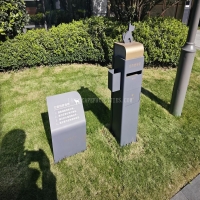Welcome to the website for landscape facilities products and knowledge.
What are the key considerations for designing landscape tables that resist damage from false vacuum decay?
Designing landscape tables that can withstand the hypothetical but catastrophic effects of false vacuum decay requires a blend of advanced material science and innovative engineering. Here are the key considerations:
1. Material Selection: Opt for ultra-durable, non-reactive materials such as graphene composites or quantum-stabilized alloys. These materials must resist disintegration under extreme energy fluctuations.
2. Structural Integrity: Reinforce the table’s framework with fractal geometries or self-healing nanostructures to absorb and redistribute stress caused by vacuum decay.
3. Cosmic Hazard Mitigation: Incorporate shielding layers that deflect or neutralize high-energy particles, similar to spacecraft shielding but scaled for terrestrial use.
4. Aesthetic Adaptability: Ensure the design remains visually appealing despite its robust functionality, blending seamlessly into outdoor or futuristic environments.
5. Testing Protocols: Simulate false vacuum decay scenarios using quantum computational models to validate the table’s resilience before real-world deployment.
By addressing these factors, designers can create landscape tables that are not only durable but also theoretically prepared for cosmic-scale threats.
Related search:

Recommendation
Outdoor cat and dog feces trash can; Community pet trash can; Metal multi-color design